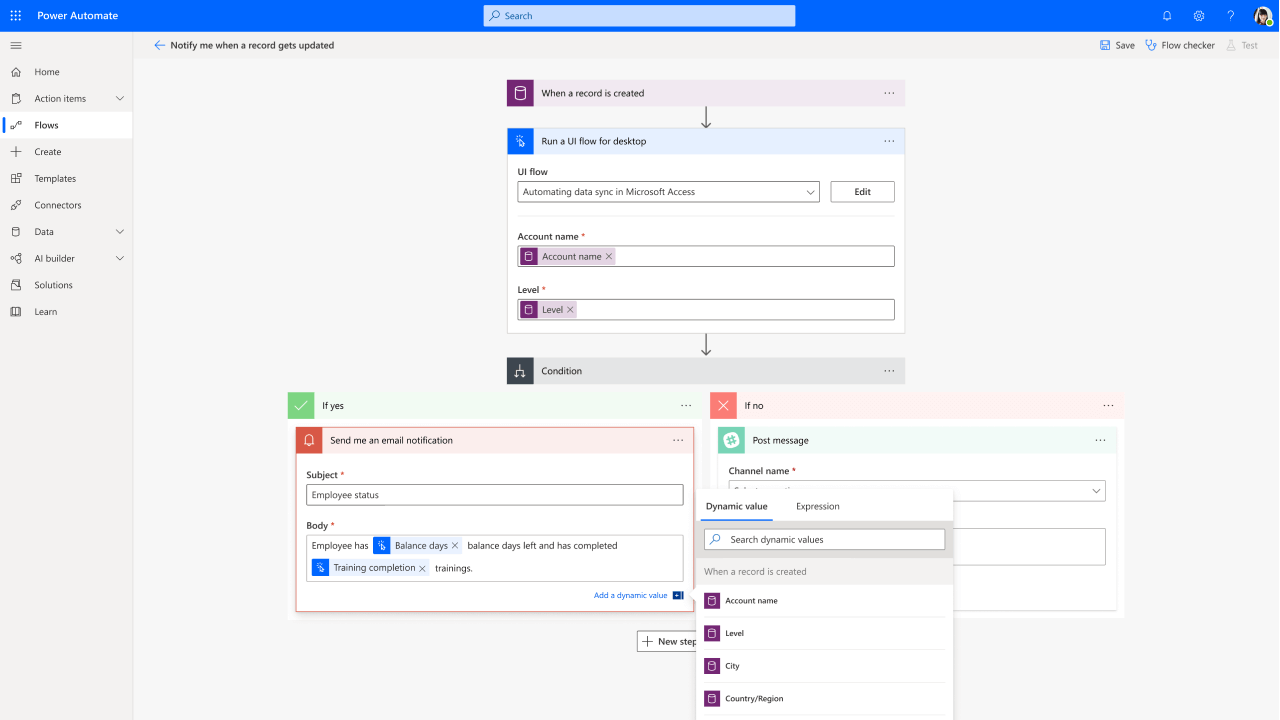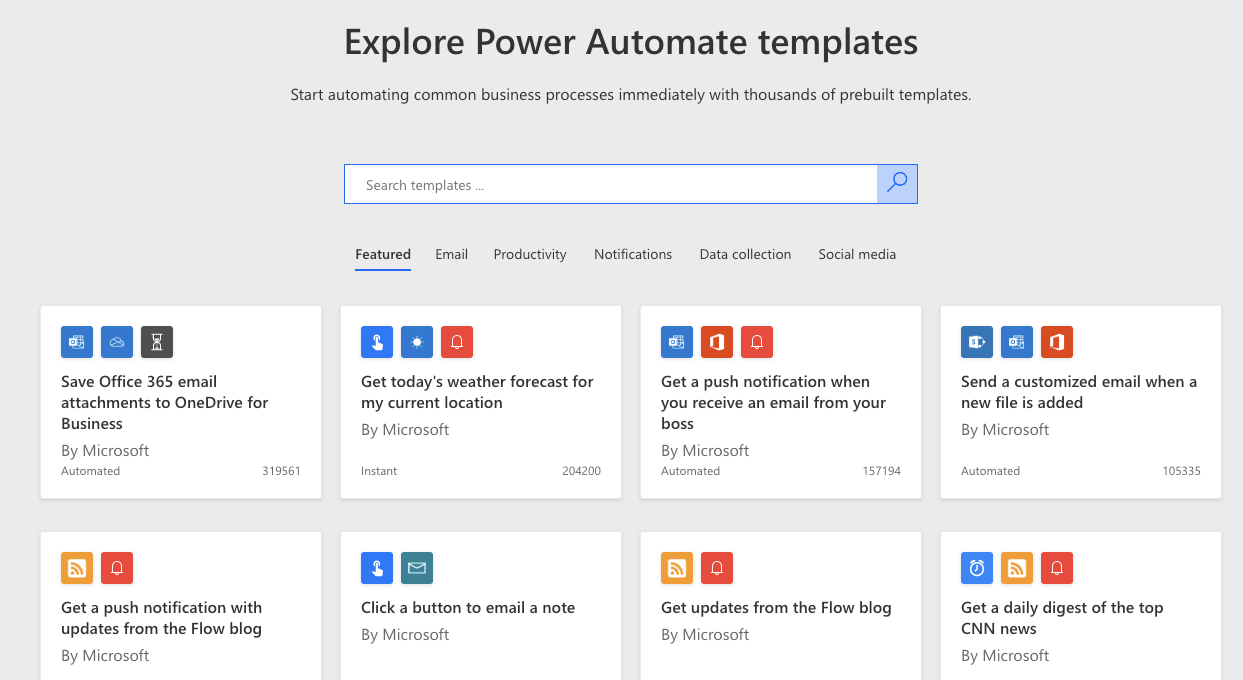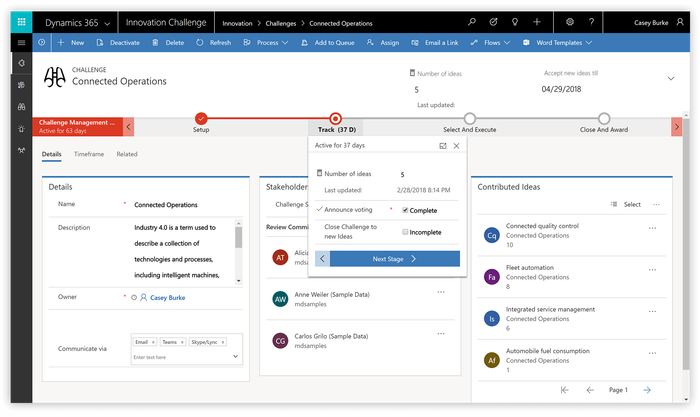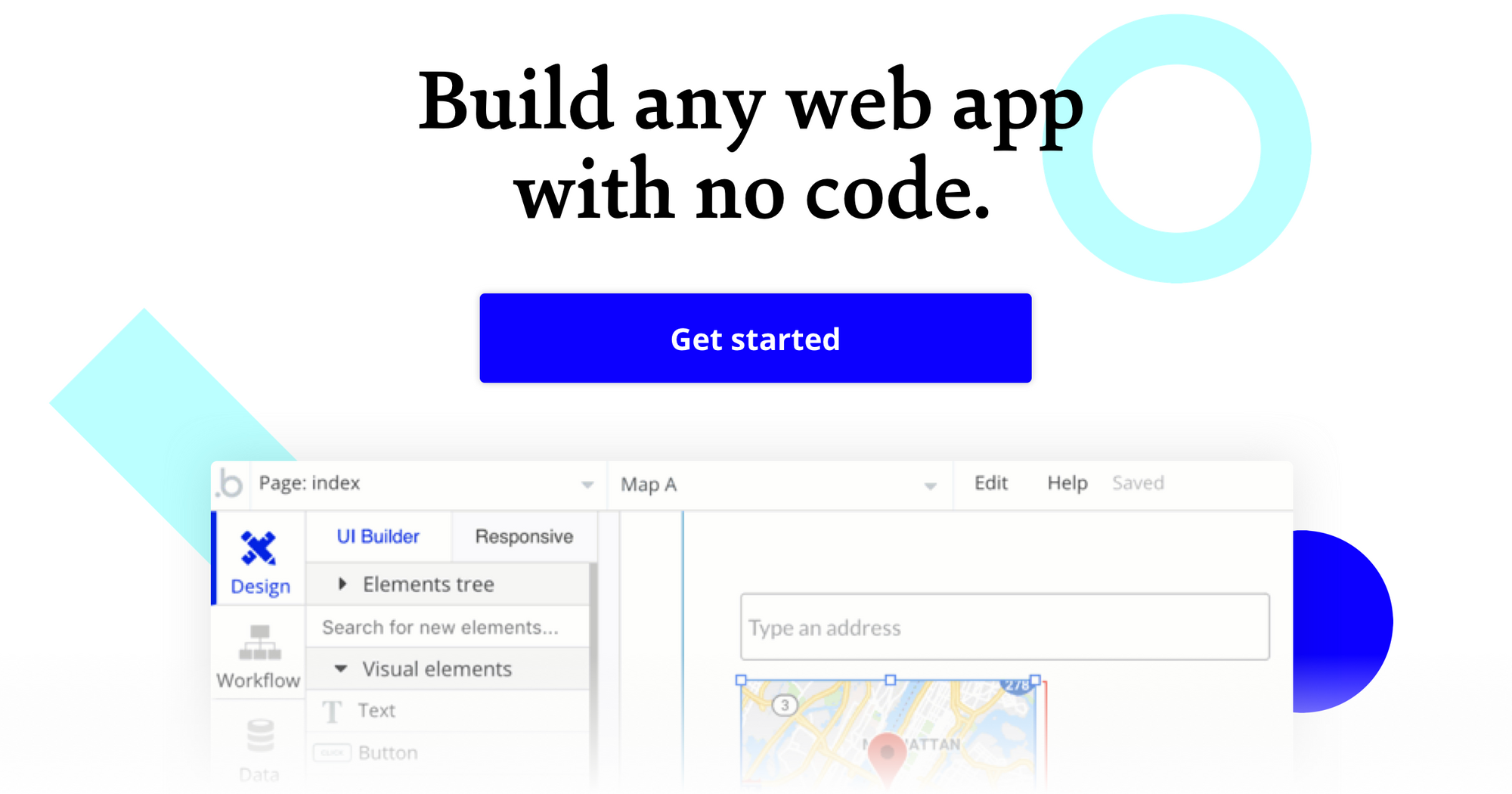At Bubble, we want to enable potential builders to create their ideas without code, so we are exploring and reviewing the many tools and software that enterprises might use to build apps.
What is Microsoft Power Automate?
Previously known as Microsoft Flow, Microsoft Power Automate is a cloud-based service that allows you to create workflows that connect applications, synchronize files, collect important information, and more.

With the help of a large template library, Microsoft Power Automate helps you to automate individual tasks, as well as large-scale systems. Using their templates, you can send a customized email whenever a new file is added to a folder or set up recurring tasks such as receiving the day’s weather forecast or a daily digest of the top CNN news.
There are many ways to extend the functionality of your app, including integrating your workflows with third-party connectors like Twitter. If someone tweets about your company, for instance, you can set up a workflow that adds that information to a spreadsheet.
Microsoft Power Automate runs on all modern desktop and mobile devices, so you can build workflows from your phone.
Who is Microsoft Power Automate for?
Microsoft Power Automate is geared towards enterprise employees. Users include citizen developers, IT professionals, and other stakeholders who are responsible for business solutions, such as people working in sales.
Those who are looking to build workflows that automate time-consuming manual tasks, such as adding data to a spreadsheet, can save time by using Microsoft Power Automate.
Microsoft Power Automate Cost and Pricing?
(Pricing model evaluation: July 2020)
Microsoft Power Automate offers 3 tiers of pricing.
Licence by user (per user plan): This option, which costs $15/user per month, allows individual users to create unlimited flows based on their specific needs.
License by user (with attended Robotic Process Automation): The price for the per user plan with attended robotic process automation (RPA) is $40 per user/month. With this plan, individual users can build an unlimited number of workflows, as well as automate legacy applications using RPA and AI.
License by flow: The per flow plan starts at $500 per month. With this option, your entire team receives access to the same five flows. Your team can only implement workflows with limited capabilities (referred to as “reserved capacity” by Microsoft), but unlike the other plans, this option does not place a limit on the number of people who can use the workflows. Additional flows can be purchased for $100/month (per flow).
Microsoft Power Automate vs. Bubble: A Comparison
How does the internal workflow model of Microsoft Power Automate compare to a more comprehensive no-code platform like Bubble?
Similarities between Microsoft Power Automate and Bubble:
Both Microsoft Power Automate and Bubble are no-code tools.
Both empower you to streamline internal workflows.
Both Microsoft Power Automate and Bubble provide integration with third-party services like Twitter.
Both allow you to build workflows from customizable templates.
Both enable developers to examine JSON objects as they add actions and triggers to their workflows.
The key differences between Microsoft Power Automate and Bubble are:
Enterprise vs. Entrepreneur: Microsoft Power Automate is designed for citizen developers and IT professionals who are working at small and medium-sized businesses, as well as large enterprises.

Bubble users include freelancers, solo entrepreneurs, developers, small and medium-size businesses, startups, and educators.
Internal Workflows vs. End Users: With Microsoft Power Automate, you are able to build and automate internal workflows. Healthcare professionals, for instance, can use Microsoft Power Automate to manage hospital beds, equipment, patients, and much more. If you are looking for flexibility to create apps with end users or customers, then Bubble provides both the necessary tools to automate internal workflows and build client-facing applications. With Bubble, you are able to build things like a full marketplace, an interactive online learning platform, and much more.
Free Option & Pricing: Bubble offers a free option that comes with the core platform features, “Built with Bubble!” branding, and community support; companies using Bubble can pay $115 or $475 per month and attach their custom domain, as well as add server capacity, application editors, version control features, and much more. Bubble also has a dedicated enterprise plan with custom pricing. Microsoft Power Automate charges enterprises by the number of users ($15 or $40/user) or workflows ($100/workflow); the cost for teams with a large number of users or organizations that require more than 10 workflows can run over $1000 per month.
Alternatives to Microsoft Power Automate
Alternative no-code tools or CMS platforms that allow you to build applications or websites without code include the following tools:
If you’re looking for an alternative Microsoft service that allows you to build more complex workflows but requires knowledge of computer science concepts such as loops and conditionals, check out Azure Power Apps.
If you want a no-code tool that can help your team automate or streamline important internal workflows, Salesforce Lightning, Betty Blocks, Coda, and Quick Base are good options.
If you require a platform that has support for native or mobile apps, consider using no-code tools like Adalo, Glide, or Thunkable.
If you’re launching an e-commerce site, and you only need basic landing pages and simple CMS, templated website hosts like Carrd, Squarespace, Wix, and Weebly are possible alternatives.
If your needs extend beyond simple CMS (like building an upvoting feature for end users), and you require full backend database functionality built-in, as well as full freedom over backend elements and triggers, no-code platforms like Bubble are a good alternative to Microsoft Power Automate.
If you want an open-source CMS platform with robust plugins that allow you to customize your blog or e-commerce site, take a look at WordPress.
About Bubble
Bubble is a leader in the no-code movement. Bubble offers a powerful point-and-click web editor and cloud hosting platform that allows users to build fully customizable web applications and workflows, ranging from simple prototypes to complex marketplaces, SaaS products, and more. Over 400,000 users are currently building and launching businesses on Bubble - some have gone on to participate in top accelerator programs, such as Y Combinator, and even raised $365M in venture funding. Bubble is more than just a product. We are a strong community of builders and entrepreneurs that are united by the belief that everyone should be able to create technology.
Join the no-code movement today.
Disclaimer: The goal of these reviews is to provide an honest, practical, differentiated comparison of features and educate readers on tools in the no-code ecosystem so that you can evaluate how these services fit together and serve your needs.
Build for as long as you want on the Free plan. Only upgrade when you're ready to launch.
Join Bubble







